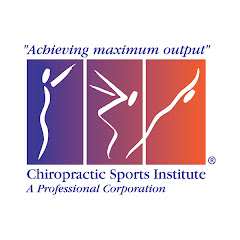By Dr. Ciro Errico
Recently a patient asked me about anti-candida recipes to
which I thought for a few minutes and we were able to come up with a few
recipes. But, before we discuss recipes let me begin by introducing Candida.
Candida is yeast that commonly causes fungal infections on
or in the body. Candida lives in small amounts on and in the body, and is one
of the most common causes of fungal infections worldwide. One of the more
common infections it can cause is yeast infection- yeast infections are
more common in women than men. But, Candida can also show up as signs of
fatigue, bloating, constipation, Rhuematiod Arthrits, lack of focus, mood
swings, skin issues, and even seasonal or sinus issues.
What does Candida do? Candida grows on sugars and high
carbohydrate foods that breakdown in the body as sugar. The sugar allows the
Candida to grow and disrupt different areas of the body. This process can cause
a person a lot of irritability, and discouragement. Let’s be honest, NO ONE wants
to deal with skin issues, be constipated, and be fatigued while trying
to work, or take care of their children, and live life.
What to do? Well, a lot of times Candida overgrowth goes
unrecognized and misdiagnosed as a hundred different things. The easiest step
is changing your diet. Diet can play such an important role in the human body
that it often times goes unrecognized as helping someone feel better. What we
eat is what we become; eat healthy and you will be healthy.
So, here is what you can do: lay off of sugar. Sugar does
more damage to the body, and it causes the Candida to strive because it is what
feeds the yeast. Sugar can be found in foods as an additive but natural sugar
also feeds the Candida. Natural sugars are fruits- dried, canned, and fresh-
should be severely limited if not eliminated from your diet. Certain veggies
like carrots and potatoes are a no-no due to the high amount of carbohydrates
that become sugar.
The second most important thing to stay away from is
processed foods. Processed foods do more damage than good in every possible
way. There is nothing healthy about processed foods. Processed foods also
include sodas, fruit juices, coffees, milks, and cheese (due to mold
process).
Another big one is staying away from breads and grains.
Breads and grains breakdown in the body as sugar, and in doing so it allows the
Candida to constantly grow and manifest itself onto the skin, or causes
reactions in the body that will show up in one form or another.
A simple recipe that I use for a typical Anti-Candida dinner
meal is:
Baked Salmon with tomatoes and a side salad.
Ingredients:
1 Salmon (whole or piece)
2 Cups of diced Cherry Tomatoes
Pinch of Sea Salt
Pinch of Pepper
Extra Virgin Olive Oil
Preheat the oven to 350 degrees. Place all the salmon in a
baking pan, and add the Cherry Tomatoes over top. Drizzle Olive Oil, Sea Salt,
and Pepper over all of it. Place under oven for about 30-45 minutes, or until
salmon is thoroughly cooked.
Side Salad:
Ingredients:
Arugula
Spinach
Romaine Lettuce
Sea Salt
Lemon Juice
Extra Virgin Olive Oil
Avocado
Put all ingredients in salad bowl, and toss with Sea Salt
and Olive Oil.
This great meal is healthy, and does not contain any foods
that will increase growth of Candida. It is also a great way to end a hard day.
Dr. Ciro Errico is on staff at CSI. Not only is Dr. Ciro has extensive knowledge of Nutrition and the care of the human body. He is high level Soccer player who also works with Athletes at Northridge and CSUCI and is also fluent in 4 languages.


